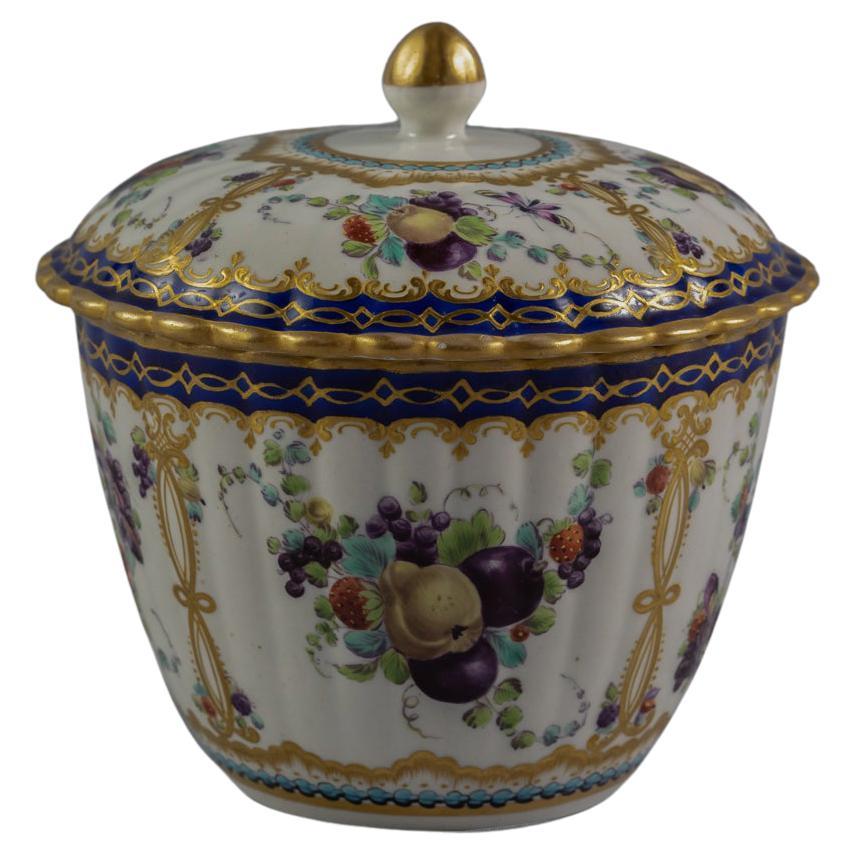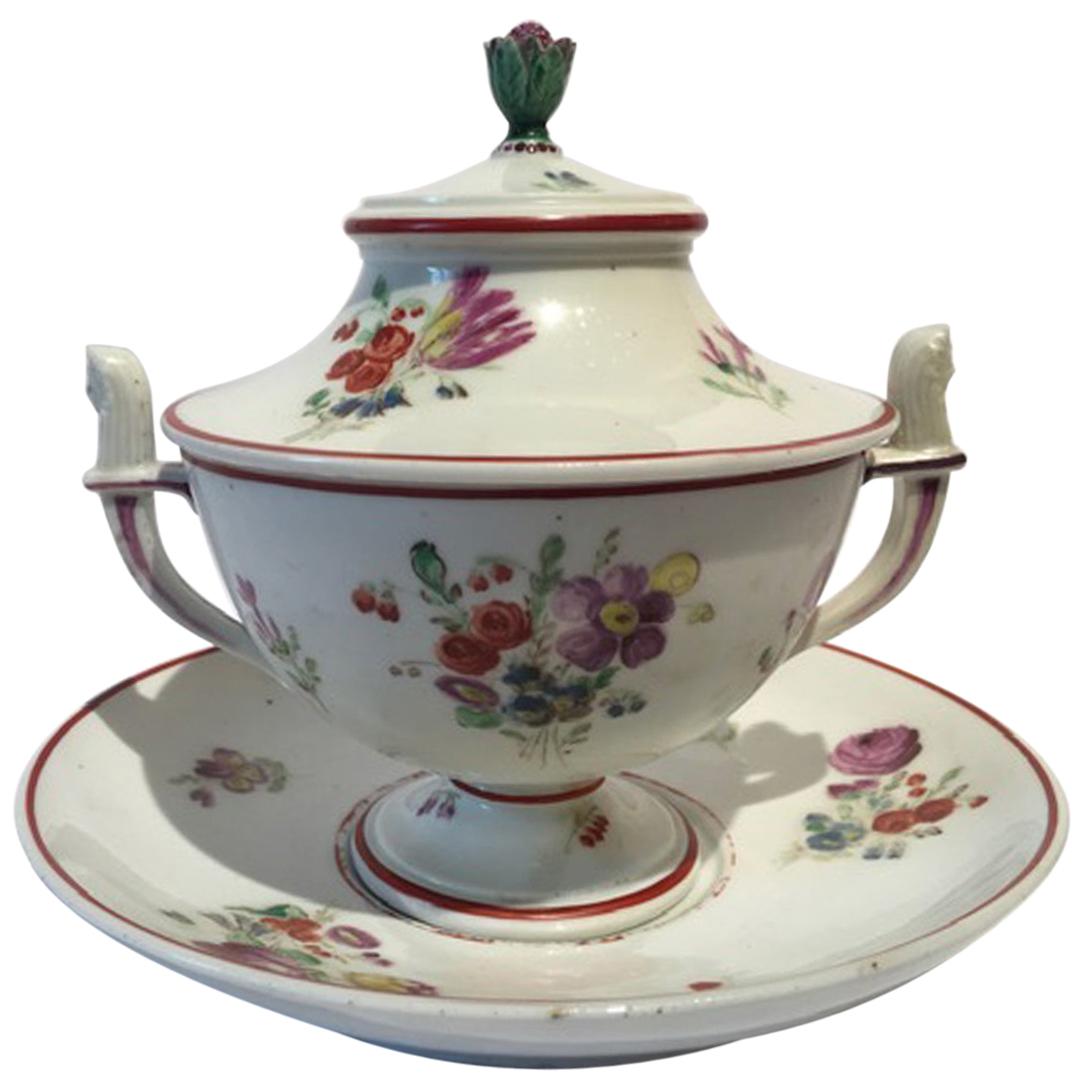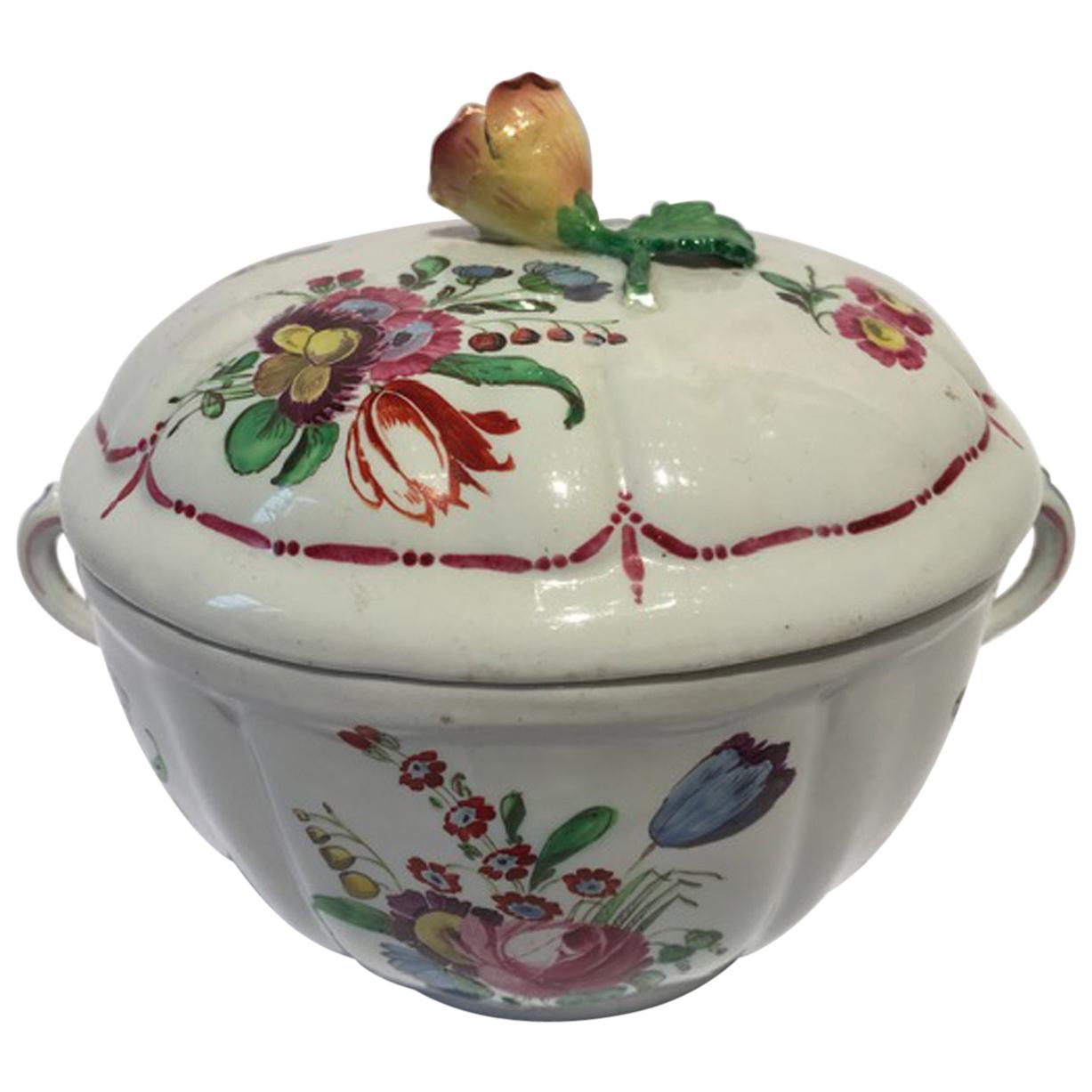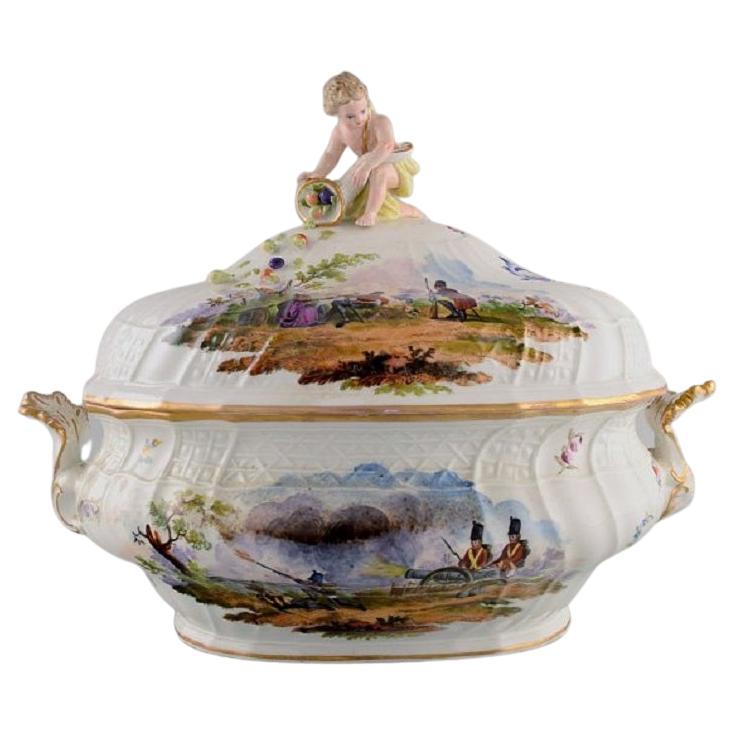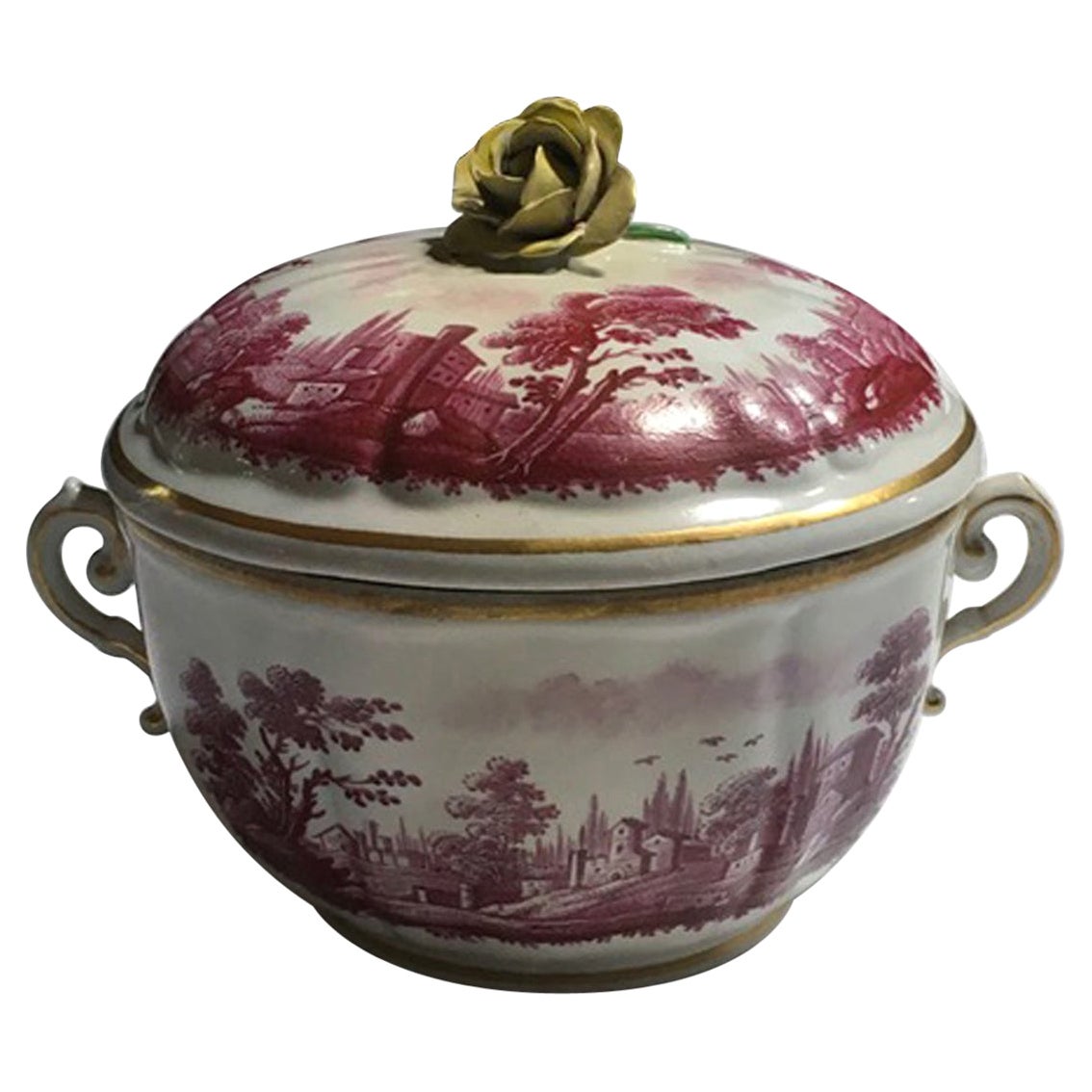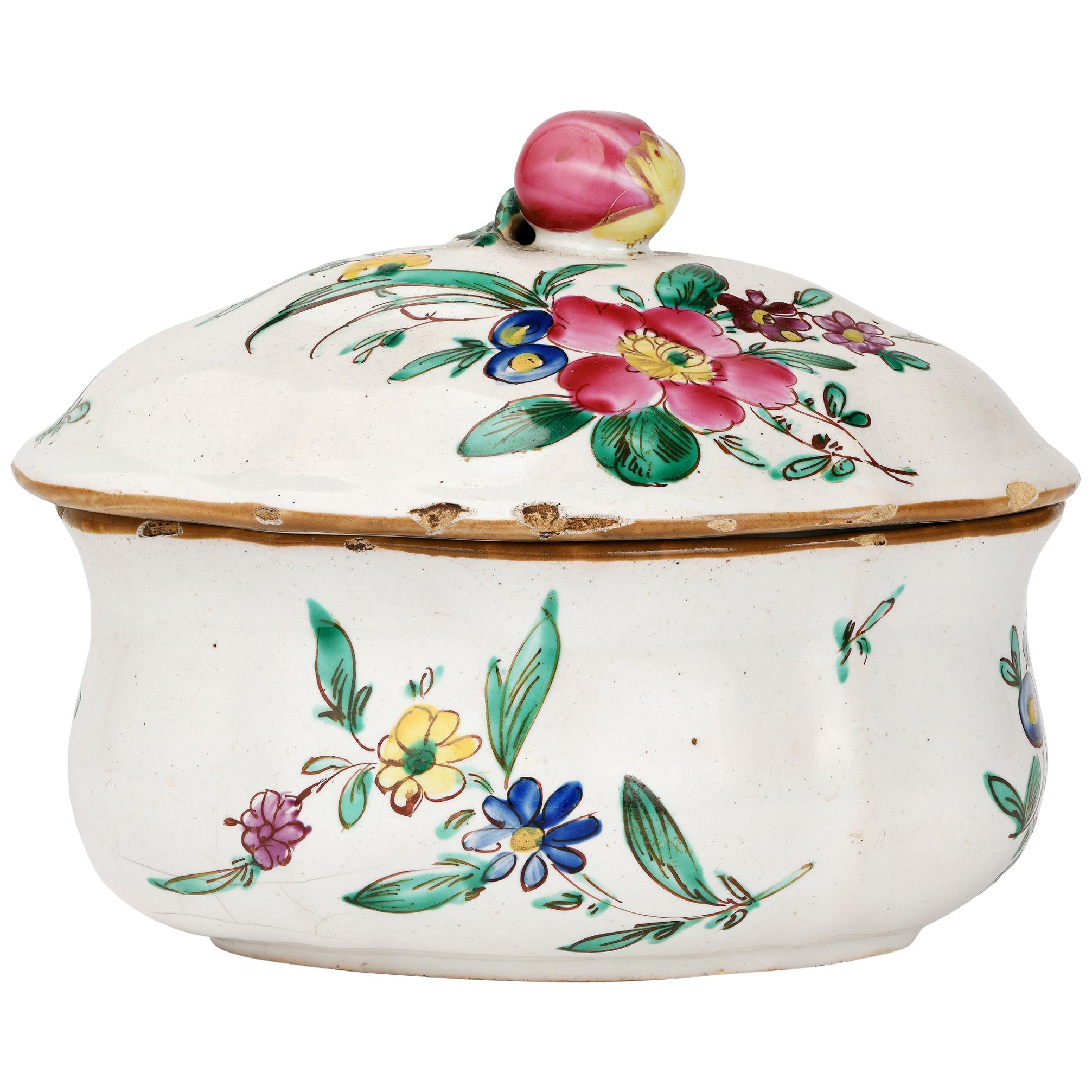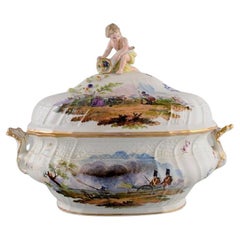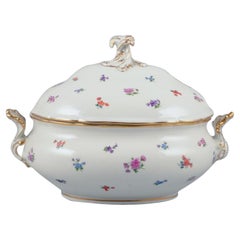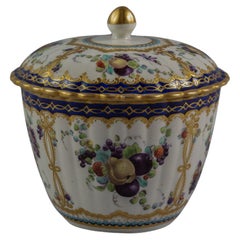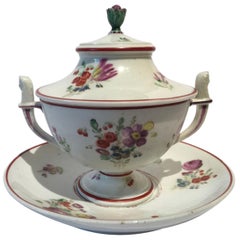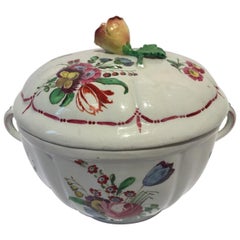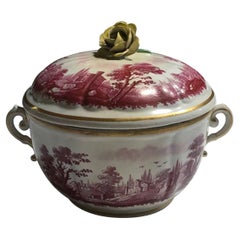Items Similar to Louisbourg, Germany, 18th-Century Large Sugar Bowl, with Landscape Scenes
Want more images or videos?
Request additional images or videos from the seller
1 of 6
Louisbourg, Germany, 18th-Century Large Sugar Bowl, with Landscape Scenes
$760
£576.98
€659.94
CA$1,061.83
A$1,180.99
CHF 616.67
MX$14,371.36
NOK 7,875.88
SEK 7,386.18
DKK 4,925.39
Shipping
Retrieving quote...The 1stDibs Promise:
Authenticity Guarantee,
Money-Back Guarantee,
24-Hour Cancellation
About the Item
Louisbourg, Germany.
18th-century large sugar bowl, hand painted with landscape scenes, lid with flowers in relief.
Measuring: Ø 14.0 cm. x H 12.0 cm.
In good condition with insignificant minor chips in flowers.
Stamped.
- Dimensions:Height: 4.73 in (12 cm)Diameter: 5.52 in (14 cm)
- Style:Rococo (In the Style Of)
- Materials and Techniques:
- Place of Origin:
- Period:
- Date of Manufacture:18th Century
- Condition:Minor losses.
- Seller Location:København, DK
- Reference Number:1stDibs: LU1041231766402
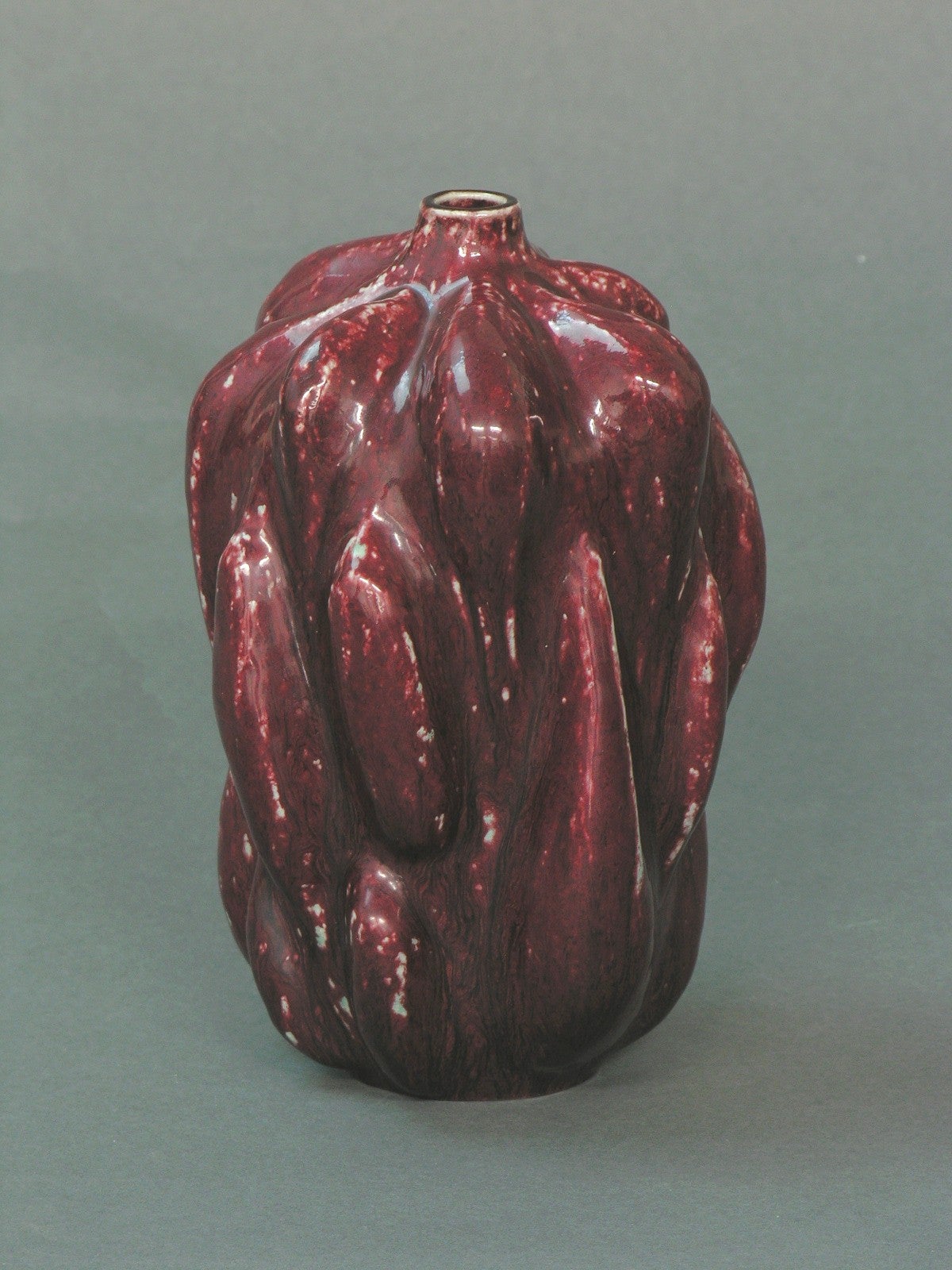
About the Seller
4.8
Platinum Seller
Premium sellers with a 4.7+ rating and 24-hour response times
Established in 1999
1stDibs seller since 2014
3,069 sales on 1stDibs
Typical response time: 3 hours
- ShippingRetrieving quote...Shipping from: Copenhagen , Denmark
- Return Policy
Authenticity Guarantee
In the unlikely event there’s an issue with an item’s authenticity, contact us within 1 year for a full refund. DetailsMoney-Back Guarantee
If your item is not as described, is damaged in transit, or does not arrive, contact us within 7 days for a full refund. Details24-Hour Cancellation
You have a 24-hour grace period in which to reconsider your purchase, with no questions asked.Vetted Professional Sellers
Our world-class sellers must adhere to strict standards for service and quality, maintaining the integrity of our listings.Price-Match Guarantee
If you find that a seller listed the same item for a lower price elsewhere, we’ll match it.Trusted Global Delivery
Our best-in-class carrier network provides specialized shipping options worldwide, including custom delivery.More From This Seller
View AllLarge Antique Meissen Lidded Tureen in Hand-Painted Porcelain
Located in København, Copenhagen
Large antique Meissen lidded tureen in hand-painted porcelain.
Military scenes and putti with cornucopia.
Museum quality, mid-19th century.
Measures: ...
Category
Antique Mid-19th Century German Biedermeier Porcelain
Materials
Porcelain
Antique Meissen Lidded Jar in Hand Painted Porcelain with Romantic Scene
Located in København, Copenhagen
Antique Meissen lidded jar in hand painted porcelain with romantic scene and gold decoration, 19th century.
Measures: 9 x 6.5 cm.
In very good condition. 2nd factory quality.
Stam...
Category
Antique 19th Century German Rococo Revival Porcelain
Materials
Porcelain
Meissen, Germany, large lidded porcelain soup tureen. Ca 1920
Located in København, Copenhagen
Meissen, Germany, large lidded porcelain soup tureen.
Hand-painted with polychrome flower motifs, gold rim.
Ca. 1920.
Marked.
First factory quality.
In perfect condition. Appears unu...
Category
Vintage 1920s German Porcelain
Materials
Porcelain
Large Royal Copenhagen Lidded Tureen with Saucer in Hand Painted Porcelain
Located in København, Copenhagen
Large Royal Copenhagen lidded tureen with saucer in hand painted porcelain with bird motifs and gold decoration, early 20th century.
Tureen measures: 31.5 x 19.5 cm.
Saucer measure...
Category
Early 20th Century Danish Soup Tureens
Materials
Porcelain
Fürstenberg, Germany, Antique Lidded Bowl in Hand-Painted Porcelain
Located in København, Copenhagen
Fürstenberg, Germany. Antique lidded bowl in hand-painted porcelain with flowers and gold decoration.
Early 20th century.
Measures: 9.5 x 9.5 cm.
In ex...
Category
Early 20th Century German Porcelain
Materials
Porcelain
Large Royal Copenhagen Fairytale Porcelain Lidded Tureen, Late 20th Century
Located in København, Copenhagen
Large Royal Copenhagen fairytale porcelain lidded tureen. Late 20th century.
Measures: 31 x 23.5 cm.
Stamped.
In perfect condition.
Category
Late 20th Century Danish Soup Tureens
Materials
Porcelain
You May Also Like
Large English Porcelain Covered Sugar Bowl, Worcester, Circa 1770
Located in New York, NY
Painted with a roundel of fruits and butterflies within a "Lord Henry Tynne" type border and an elaborately gilt blue band at the rim.
Category
Antique 1770s English Porcelain
Materials
Porcelain
Italy 18th Century Richard Ginori Porcelain Sugar Bowl with Cover
By Richard Ginori
Located in Brescia, IT
This fine and elegant sugar bowl in neoclassical style is a piece handmade by the well known Italian factory Richard Ginori in Doccia. The set is composed by three pieces: the sugar ...
Category
Antique Mid-18th Century Italian Baroque Porcelain
Materials
Porcelain
$1,294 Sale Price
28% Off
Italy 18th Century Richard Ginori Porcelain Covered Cup or Sugar Bowl
By Richard Ginori
Located in Brescia, IT
This fine and elegant covered cup in Baroque style, is a piece hand made by the well known Italian factory Richard Ginori in Doccia. The set is composed by two pieces: the cup and th...
Category
Antique Mid-18th Century Italian Baroque Porcelain
Materials
Porcelain
$1,725 Sale Price
20% Off
Free Shipping
Italy Richard Ginori Mid-18th Century Pink Porcelain Covered Cup with Landscapes
By Richard Ginori
Located in Brescia, IT
Italian Richard Ginori mid-18th century porcelain covered cup or little covered sauce tureen painted with landscapes in fuchsia color
This beautiful covered cup it was hand painte...
Category
Antique Mid-18th Century Italian Baroque Porcelain
Materials
Porcelain
$2,875 Sale Price
20% Off
Italian Maiolica Ancient Sugar Bowl, Lodi, 1770-1780
By Antonio Ferretti
Located in Milano, IT
Maiolica sugar bowl
Antonio Ferretti Manufacture
Lodi, Circa 1770-1780
Maiolica polychrome decorated “a piccolo fuoco” (third fire).
It measures 3.54 x 4.52 x 3.54 in (9 x 11,5 x 9 cm)
Weight: 0.394 lb (0.179 kg)
State of conservation: small and slight chips on the edges.
The small sugar bowl has a swollen and ribbed body resting on a flat base. The cap-shaped lid follows the rib of the container and is topped with a small knob in the shape of a two-colored fruit.
The sugar bowl is painted “a piccolo fuoco” (third fire) with the characteristic floral motif of bunches and isolated semis.
An example which closely corresponds to this one is kept at the Civic Museum in Lodi (G. Gregorietti, Maioliche di Lodi, Milano e Pavia, Catalogo della Mostra, Milano, 1964 n. 137).
This decorative style represented a strong point of the Lodi factory, which established itself thanks to the vivid nature of the colors made possible by the introduction of a new technique perfected by Paul Hannong in Strasbourg and later introduced by Antonio Ferretti to Italy. The production process, called “piccolo fuoco” (third fire), allowed the use of a greater number of colors than in the past; in particular, the purple of Cassius, a red made from gold chloride, was introduced. Its use allowed for many more tones and shades, from pink to purple.
The Ferretti family started their maiolica manufacturing business in Lodi in 1725.
The forefather Simpliciano started the business by purchasing an ancient furnace in 1725 and, indeed, we have evidence of the full activity of the furnaces starting from April of the same year (Novasconi-Ferrari-Corvi, 1964, p. 26 n. 4). Simpliciano started a production of excellence also thanks to the ownership of clay quarries in Stradella, not far from Pavia. The production was so successful that in 1726 a decree of the Turin Chamber came to prohibit the importation of foreign ceramics, especially from Lodi, to protect internal production (G. Lise, La ceramica a Lodi, Lodi 1981, p. 59).
In its initial stages, the manufacture produced maolicas painted with the “a gran fuoco” (double fire) technique, often in turquoise monochrome, with ornamentation derived from compositional modules in vogue in Rouen in France. This was also thanks to the collaboration of painters like Giorgio Giacinto Rossetti, who placed his name on the best specimens next to the initials of the factory.
In 1748 Simpliciano made his will (Gelmini, 1995, p. 30) appointing his son Giuseppe Antonio (known as Antonio) as universal heir. After 1750, when Simpliciano passed away, Antonio was directly involved in the maiolica factory, increasing its fortunes and achieving a reputation on a European level. Particularly important was the aforementioned introduction in 1760 of the innovative “a piccolo fuoco” (third fire) processing, which, expanding the ornamental repertoire with Saxon-inspired floral themes, was able to commercially compete with the German porcelains that had one of its most renowned offerings in the naturalistic Deutsche Blumen. Antonio Ferretti understood and promoted this technique and this decoration, proposing it in a fresher and more corrective version, less linked to botanical tables, both with or without contour lines, as well as in purple or green monochrome. After efforts to introduce more industrial production techniques to the sector succeeded, even the Ferretti manufacture, in the last decade of the eighteenth century, started heading towards decline despite its attempts to adapt production to neoclassical tastes.
In 1796 the Napoleonic battle for the conquest of the Lodi bridge over the Adda definitively compromised the furnaces. Production resumed, albeit in a rather stunted manner, until Antonio's death on 29 December 1810. (M. L. Gelmini, pp. 28-30, 38, 43 sgg., 130-136 (for Simpliciano); pp. 31 sgg., 45-47, 142-192 (for Antonio).
Bibliography
G. Gregorietti, Maioliche di Lodi Milano e Pavia Catalogo della Mostra, Milano, 1964 n. 137;
C. Baroni, Storia delle ceramiche nel Lodigiano, in Archivio storico per la città e i comuni del circondario e della diocesi di Lodi, XXXIV (1915), pp. 118, 124, 142; XXXV (1916), pp. 5-8;
C. Baroni, La maiolica antica di Lodi, in Archivio storico lombardo, LVIII (1931), pp. 453-455;
L. Ciboldi, La maiolica lodigiana, in Archivio storico lodigiano, LXXX (1953), pp. 25 sgg.;
S. Levy, Maioliche settecentesche lombarde e venete, Milano 1962, pp. 17 sgg.;
A. Novasconi - S. Ferrari - S. Corvi, La ceramica lodigiana, Lodi 1964, ad Indicem; Maioliche di Lodi, Milano e Pavia (catal.), Milano 1964, p. 17;
O. Ferrari - G. Scavizzi, Maioliche italiane del Seicento e del Settecento, Milano 1965, pp. 26 sgg.;
G. C. Sciolla, Lodi. Museo civico, Bologna 1977, pp. 69-85 passim; G. Lise, La ceramica a Lodi, Lodi 1981;
M. Vitali, in Storia dell'arte ceramica...
Category
Antique 1770s Italian Rococo Ceramics
Materials
Maiolica
Italy Richard Ginori Mid-18th Century Porcelain Sugar Bowl Pink Landscapes
By Richard Ginori
Located in Brescia, IT
Richard Ginori mid-18th Century porcelain sugar bowl with pink landscapes drawings, hand made in Italy
This very elegant Richard Ginori porcelai...
Category
Antique Mid-18th Century Italian Louis XV Porcelain
Materials
Porcelain
$1,629 Sale Price
20% Off
More Ways To Browse
Copenhagen Blue Plate
Lavender Porcelain
Porcelain Figurine 18th Century
Porcelain Serving Tray
Vintage Espresso Set
1810 Cup
China Dinner Service
English Blue And White China
Meissen Cup
Meissen Porcelain Cup
Minton Gilt
Morning Glory Antique
Painted Flower Dessert Plates
Silver Plate Covered Dish
Chinese Covered Bowl
Haviland Limoges France
Meissen Kandler
Meissen With Lid
